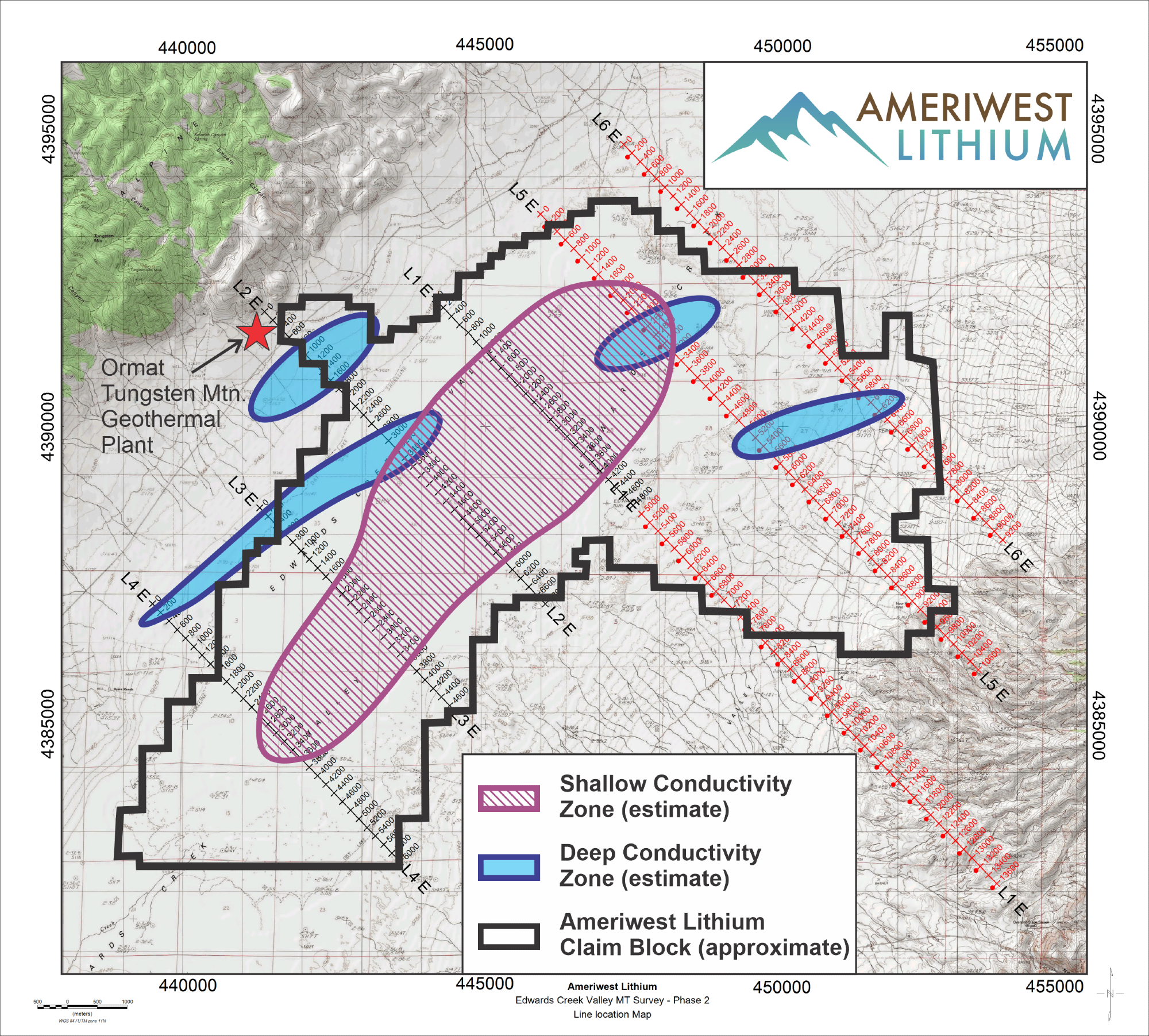The Edwards Creek Valley Property in Nevada, owned by Ameriwest Lithium Inc., a North American lithium exploration and development company, could contain a much larger shallow brine target than previously believed, according to the results of a magnetotelluric geophysical survey. The property is located about 120 miles east of Reno.
 Edwards Creek Valley MT Survey. Image Credit: Ameriwest Lithium Inc.
Edwards Creek Valley MT Survey. Image Credit: Ameriwest Lithium Inc.
We are extremely excited by the results of the MT Survey, especially the delineation of a large near surface brine target that appears to be almost 20 km2 in size. The Company plans to move forward with permitting to test this shallow target with drilling and will ultimately follow up with testing of the deeper targets in the future.
David Watkinson, President and Chief Executive Officer, Ameriwest Lithium Inc.
There are 1,243 adjacent claims totaling 22,200 acres in Edwards Creek. As part of the MT Survey, the company finished six MT lines to cover the claim area depicted in the figure. An MT Survey measures the electrical resistivity of the subsoil.
High salty water is responsible for low electrical resistivity, the same as high electrical conductivity, in the pores of a host reservoir. Lithium could be present in brine or saline water. For instance, Clayton Valley in Nevada contains lithium brine deposits, including the active Silver Peak Mine of Albemarle.
Another figure depicts MT measurements (resistivity) along MT Line 2 in an example cross-section. In the dark shades of the cross-section, a large shallow near-surface zone with strong conductivity can be seen. Areas having resistivities of less than 1.5 ohm-m are sought after by Ameriwest.
Less than 1.5 ohm-m low resistivities point to possible brine sites that could contain lithium. The figure's deeper underground zones of low resistivity (high conductivity) also indicate several deeper brine prospects.
The six MT lines are also interpreted together in the figure with an approximation of the size of the shallow and deep high conductivity zones. The shallow conductivity zone, indicated in red and occurs at the surface, is thought to have an extent of around 20 km2 (8 mi2) and a thickness of between 100 and 200 m (300 and 600 feet).
The Ameriwest claim block seems to contain the shallow conductivity zone roughly parallel to the basin axis.
The MT 2D inversions also reveal several deeper conductivity zones depicted in red. These conductivity zones appear to have trends similar to the shallow zone and are oriented (northwest to southeast).
In some places, the deeper zones can be as deep as 1,400 m (4,600 ft). As of right now, it is unknown whether the shallow or deep low-resistances are connected to the hot springs or other geothermal resources in the vicinity as indicated on the map.
Notably, the occurrence of low resistivity zones, which denote high conductivity intervals, is likely a sign of heavily salinized aquifers. There is, however, no guarantee that there are appreciable lithium concentrations in brine or that a useful commercial resource has been found.
Lithium resource presence can only be demonstrated through drilling and water sampling. As no established mineral resources or reserves exist on the property, any similarities to projects like Albemarle’s Silver Peak Mine do not ensure exploration success at Edwards Creek.